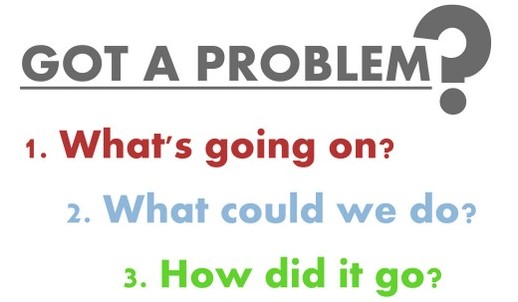
I’ve got a thing for well-illustrated books that really capture the endearing quirkiness of kids. That’s the first thing that made me love Ladybug Girl and Bumblebee Boy* by Jacky Davis and David Soman. But as I read it to my 4-year-old again tonight, I realized what a perfect book it is to illustrate the social problem-solving kids need to do almost every day. Something he had done today, in fact.
Just this afternoon, he and his brother were at odds about how to play together. As they got flustered and frustrated and began to grouch at each other, I stepped out to intervene. In a split second, I had to decide whether to intervene by settling it myself, or by taking the time to teach them to own their problems and problem solve together.
If you’ve read my first ebook or taken my ecourse you know I believe kids need to be taught how to problem solve. It’s tempting to swoop in and call the shots, rescue the kids, and restore the peace, but kids need the experience or they won’t have the skills.
So I stated the problem: “Sounds like you two need to find a way to play that makes you both happy.”
I asked them for their ideas: “What do you think you should do?” This is always the tricky part. They both start out saying what they want. But going round and round these two oppositions is often where kids stop. They usually get louder, get mad, and often, get physical. What I try to teach kids is that in this step they have to share ideas — new ideas, back and forth — until they come up with one they agree on.
That’s where this great book comes in. This problem-solving brainstorming process is the crux of the book’s plot. Lulu and her friend Sam want to play together, but they just can’t seem to agree on what they should play. They take turns making suggestions until they finally come up with one they can both get excited about. (Playing Ladybug Girl and Bumblebee Boy, of course!)
As we read the book again tonight, I made connections with my son to his own social dilemma from earlier today. Not just that the problem was similar, but also the facial expressions, and some of the emotional labels in the book. “You were frustrated like Lulu, weren’t you? When I came outside, you two looked a little like this picture.”
Then as Lulu and Sam shared their ideas, I reminded my little guy of how he and his brother had to come up with ideas until they found one they both liked too. And of course, as Lulu and Sam began to have fun playing together, I pointed out how happy they looked and that it reminded me of how he and his brother had so much fun once they decided on the game they wanted to play.
Using books as a launchpad for social discussions is a great way to give kids experience problem solving when the stakes are low and tempers are calm. The experience is even more powerful when the book is of high literary quality, as this one is. This is a great story and a great way to reinforce the problem-solving process in a relatable, enjoyable way.
You can read more about how I get kids involved in the problem-solving process in this guest post at Toddler Approved! or in Parenting with Positive Guidance.
*Affiliate Link



It is so easy in our fast paced world to just step in and help our kids solve their problems. It’s a pleasure for me to watch how my married daughter guides her children through these social problem solving situations knowing when to step in and when to let them work it out. Even with my early childhood degree I certainly didn’t have the patience she does.